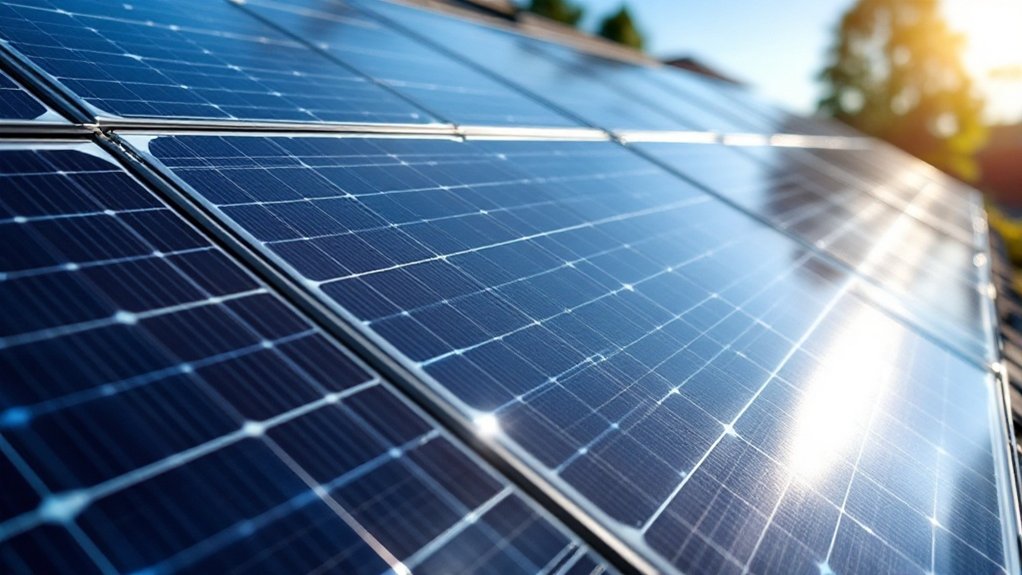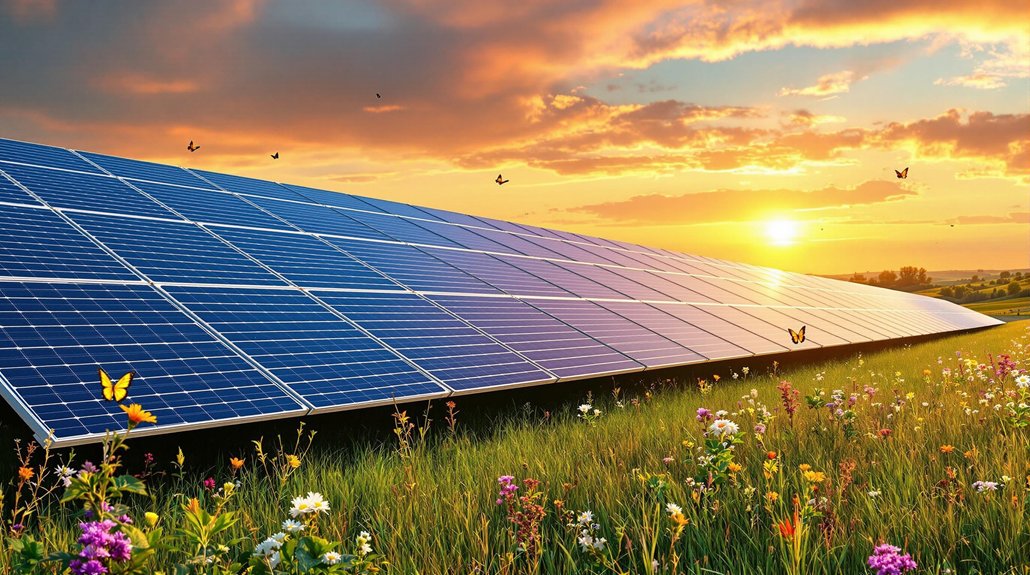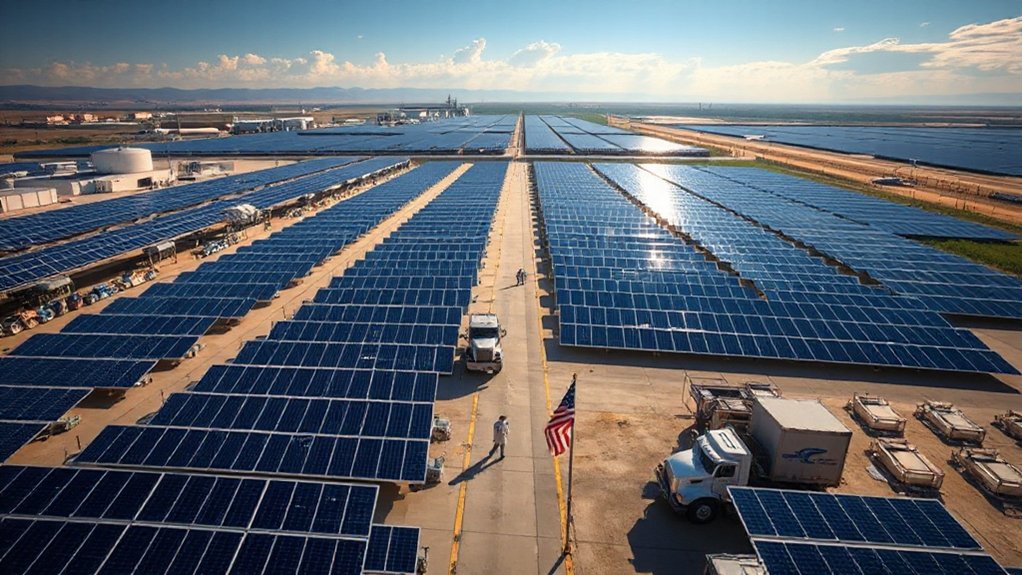Solar panels convert sunlight into electricity through the photovoltaic effect. When sunlight hits the silicon semiconductors in the panels, it frees electrons from their atoms, creating an electric current. These freed electrons flow through an electric field, generating DC electricity. Inverters then transform this DC power into AC electricity that homes can use. While shade and temperature can affect performance, solar technology keeps advancing. There’s a whole world of solar innovation just waiting to be discovered.

While most people see solar panels as nothing more than shiny rectangles adorning rooftops, these high-tech devices are actually sophisticated power generators that transform sunlight into usable electricity. At their core, solar panels are built with layers of silicon semiconductors – not exactly the most exciting material, but boy does it get the job done.
Solar panels may look simple, but these silicon-powered marvels are revolutionizing how we harvest the sun’s boundless energy.
The magic happens through something called the photovoltaic effect. Sunlight hits the silicon atoms in these panels and, like an atomic game of pool, knocks electrons loose. These freed electrons don’t just sit around – they’re forced to move through an electric field created by different layers of silicon. And just like that, electricity is born. Free electricity is generated continuously as long as sunlight hits the panels.
Not all solar panels are created equal, though. Monocrystalline panels are the overachievers of the bunch, converting up to 22% of sunlight into electricity. Polycrystalline panels are the middle children, slightly less efficient but easier on the wallet. Then there’s thin-film – the scrawny but flexible cousin that’s perfect for unusual applications. Proper installation requires panels to be mounted at optimal angles to maximize sun exposure.
Here’s where things get interesting. Solar panels produce DC electricity, but homes run on AC. That’s where inverters come in, transforming the power into something your coffee maker can actually use. Think of them as electricity translators, constantly working to keep your appliances happy. Modern systems often include energy storage solutions to ensure power availability during peak demand times.
The whole operation isn’t without its challenges. Shade is like kryptonite to solar panels, and they’re not huge fans of heat either. Ironically, these sun-powered devices actually become less efficient when they get too hot. Plus, they slowly lose their mojo over time – about half a percent each year.
Scientists aren’t sitting still, though. They’re cooking up some pretty wild innovations, like transparent solar panels that could turn your windows into power plants. There’s even self-cleaning coatings in development because, let’s face it, nobody wants to spend their weekends scrubbing solar panels.
The future of solar power isn’t just bright – it’s downright dazzling.









